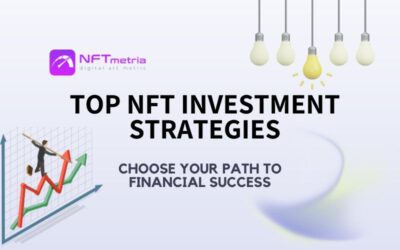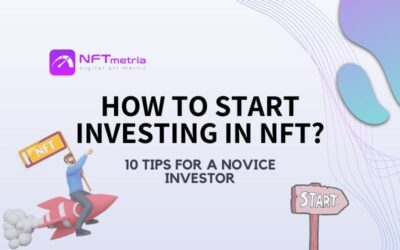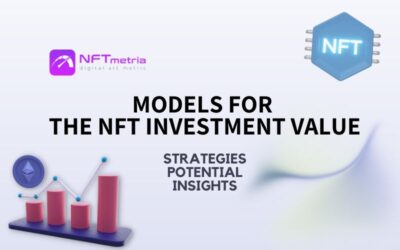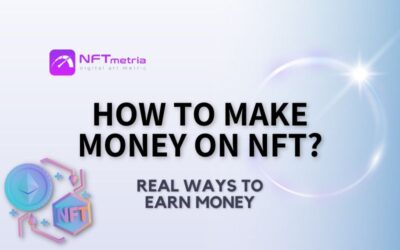Welcome to our guide on “Top NFT Investment Strategies.” As the world of NFTs continues to evolve, navigating the market effectively has become more crucial than ever. Whether you’re a seasoned investor or someone considering their first foray into the world of non-fungible tokens, understanding the right strategies can make all the difference. In this comprehensive article, we will explore the most effective and proven methods for making sound investments in the vibrant and ever-changing landscape of NFTs.
What Are NFT Investment Strategies?
NFT investment strategies constitute a set of plans and methods designed to optimize investments in digital assets, such as collectible arts, virtual worlds, and other forms of art represented as NFTs. These strategies assist investors in determining which assets to acquire, when to buy them, and when to sell, maximizing profitability.
Why You Need an NFT Investment Strategy
Having a well-thought-out investment strategy is crucial for several reasons:
- Avoiding Emotional Influence: Emotions and stress often lead to impulsive decisions in the NFT market. Stress-induced choices can negatively impact investment portfolios. Emotional decisions may lack rationality and understanding of market data, leading to poorly timed entries or exits. Utilizing investment strategies prevents hasty and irrational decisions, safeguarding your investments.
- Organizing Investment Activities: Having a comprehensive view and a detailed action plan ensures systematic and profitable investments. Staying focused on your strategy’s specifics prevents deviation from your investment plan, maintaining consistency in your approach.
- Maximizing Investment Returns: A well-developed trading strategy, based on thorough market analysis, can significantly boost profits compared to random, one-time investments. A professional approach yields superior results. A formalized, written strategy with a clearly defined action algorithm enhances income potential by over 30% for the same investment amounts. This increase results from heightened concentration and faster decision-making, leading to a more lucrative investment journey.
What to Keep in Mind When Investing in NFTs?
Here are the key factors to consider when investing in NFTs:
- Conduct Research: Examine the asset, its creator, and the market before investing. Well-informed decisions often lead to profitability. That’s why we emphasize aspects ranging from market history and its cycles to the nuances of selecting a project for investment. Your own research forms the foundation and drives you as an investor.
- Avoid Hype: Evaluate NFTs based on comprehensive criteria rather than just their popularity. Remember, the shiniest item isn’t always the most valuable and promising.
- Set a Budget: Define your maximum budget before investing. Haphazard and hype-driven purchases often exceed your personal financial limit, leading you down a path far from prudent investment. Avoid getting caught in a casino-like frenzy, which is far from sensible investing.
- Diversify Your Portfolio: Distribute your investments across various types, creators, and projects to mitigate the impact of market fluctuations.
- Stay Informed on Trends: Keep an eye on the NFT space and adapt your strategy accordingly. Knowledge is power, and staying one step ahead is crucial.
- Be Prepared for Volatility: NFT markets can be unpredictable, so be ready to adjust your approach and seize opportunities as they arise.
- Be Consistent: It’s no secret that there’s no one-size-fits-all formula for successful trading. Remember that this market is still evolving. If you face setbacks in one direction, don’t rush to write off the entire market. Explore other projects, budgets, as well as personal approaches and principles in conducting this activity.
Components of an Effective NFT Investment Strategy
An NFT investment strategy is a meticulous blueprint that shapes your investment journey. It comprises several crucial elements:
- Conditions for Opening a Position: This fundamental aspect individualizes your NFT strategy, demanding clear rules and criteria for initiating an investment position. Reliance on accurate, reliable data derived from NFT market analysis, positive news, or project developments is imperative. Informed and validated decisions are pivotal, making the entry algorithm a cornerstone of any investment strategy.
- Conditions for Closing a Position: Determining specific conditions for exiting an NFT investment position is equally vital. Your strategy should encompass both positive and negative scenarios for closing positions, ensuring flexibility and adaptability to market dynamics.
- Timeframe for Holding Positions: Consider the duration of your position carefully while formulating your strategy. Strategic planning prevents impulsive decisions to close positions prematurely, allowing for a well-informed approach to promising tokens or collections.
- Utilization of Analytical Tools: An effective NFT investment strategy relies heavily on robust analytical tools. Ensure your strategy integrates reliable and verified data sources, forming the bedrock of your investment decisions.
- Skillful Use of Tools: Understand and proficiently employ a set of analysis tools in a sequential manner. Detailed algorithms employing technical tools for NFT market research should be an integral part of your strategy, ensuring a comprehensive analysis process.
- Risk Assessment: Include a detailed risk assessment algorithm in your NFT strategy, precisely defining acceptable risk levels for entering positions. Accurate evaluation prevents potential losses, safeguarding your investment from illiquid assets.
- Profitability Evaluation: Justifying profitability estimates is paramount. Utilize reliable methods based on analogs to calculate profitability accurately. Comparing with similar successful ventures provides a realistic basis for your profitability assessment.
- Strategic Pauses and Adaptation: Recognize the need to halt investments if the strategy falters. Markets evolve, and strategies may lose efficacy over time. Timely detection of downturns and adjustments to your strategy are essential. A significant drawdown during a growing market trend is a clear indicator to pause, reassess, and modify your approach.
NFT Trading Investment Strategies
An NFT investment trading strategy is an approach to researching, searching, buying, and selling NFTs, taking into account market conditions, recent trends, and historical price developments with the goal of generating investment profits. It’s essential to note that all the trading strategies mentioned below must be combined with a comprehensive evaluation of each NFT project based on social indicators and analytical services.
Now, let’s explore proven strategies:
Buy the Floor
The NFT market continues to gain momentum, ensuring the increase in the value of NFTs in the coming years. From this perspective, you can consider the strategy of investing in NFTs based on the floor price. The idea behind this is that such digital assets might be undervalued and have growth potential. You can sort the NFTs listed for sale from your chosen collection by price (from lowest to highest). This becomes the minimum price.
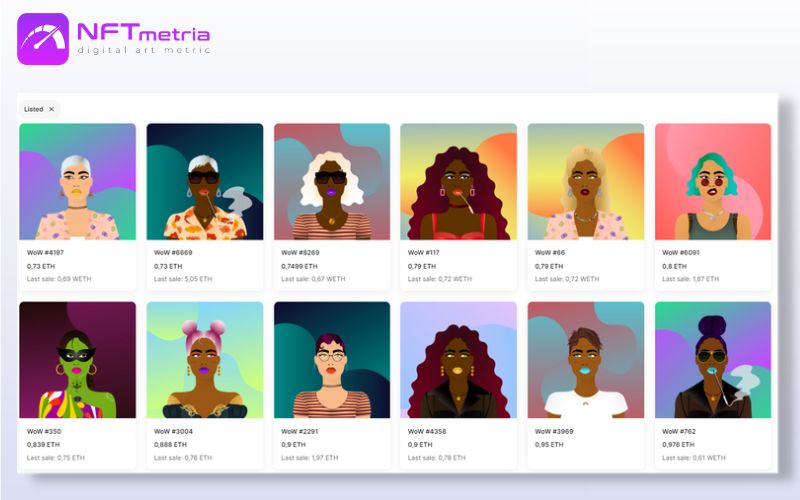
Pros:
- Identifying undervalued assets: Buying the floor allows you to pinpoint assets that might be undervalued and ripe for growth.
- Benefit from price appreciation: Investing in NFTs with a minimum price enables you to leverage the growth potential as the market recognizes the asset’s true value.
- Exploiting market inefficiencies: This strategy capitalizes on price disparities in the market, taking advantage of inefficiencies.
- Mitigating loss risks: A higher price floor can serve as a safeguard, minimizing the possibility of significant losses.
- Easier future selling: Most sales occur within the segment of cheaper NFTs in the collection, potentially ensuring high demand for your assets.
Cons:
- Higher research requirements: Determining the genuine minimum price level demands extensive research and market knowledge.
- Possibility of price stagnation: NFTs with a minimum price aren’t always subject to rapid appreciation and might remain in a state of stagnation.
- Difficulty in determining true minimum prices: Identifying precise minimum prices can be a challenging task as they could be artificially inflated or manipulated.
Buying the Ceiling
If you’re ready to invest substantial funds in the NFT market, adopting the “Buying the Ceiling” strategy could be the right path. NFTs are art. Unique and vibrant NFTs are the most coveted. People aspire to be kings and are willing to pay for it.
In this case, we’re talking about objectively high prices due to the rarity, value, and uniqueness of the token in the collection. Therefore, it is important to be able to wisely select NFTs within a collection. In every collection, you can find NFTs priced unreasonably high. For instance, with an average price of 1 ETH, some traders list their digital assets for sale at 500 ETH or even 1000 ETH. These figures are beyond the market, and such spikes are not even considered.
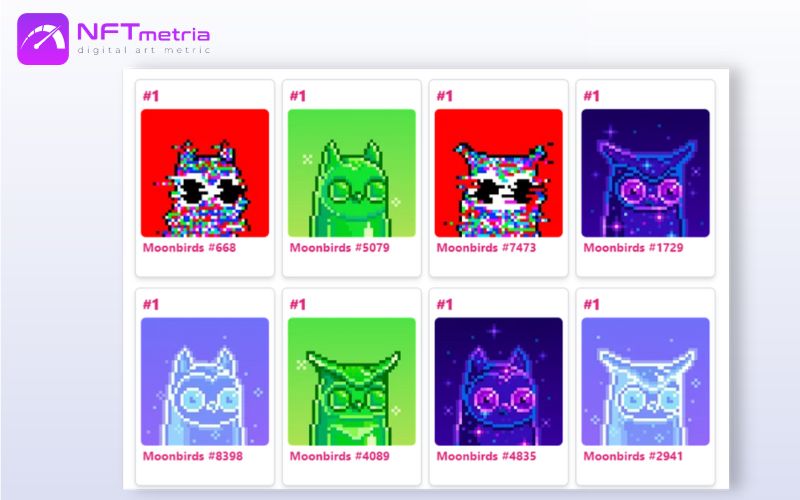
Pros:
- Access to premium assets: “Buying the Ceiling” offers the opportunity to own the rarest NFTs with limited availability and high desirability.
- Potential for significant price growth: Investments in pinnacle NFTs can lead to substantial growth if the project gains traction, as they typically constitute the core offerings of the project.
Cons:
- High entry barrier: This strategy demands significant capital, limiting accessibility for traders with substantial financial resources.
- Risk of significant losses: If the project’s popularity dwindles, investors stand to lose a significant portion of their investments.
- Challenges in finding buyers: Given the high cost of pinnacle NFTs, finding an interested buyer at the right price can prove to be a daunting task.
- High price volatility: Prices of pinnacle NFTs can be highly volatile, potentially leading to price stagnation or even depreciation.
Flipping
The essence of the Flipping trading strategy lies in short-term deals, capitalizing on the market’s short-lived trends and hype. In this case, your quick reaction and market acumen are crucial to capturing these trends.
Pros:
- Rapid Returns: Flipping allows for swift profit generation, freeing up capital for new opportunities.
- Potential for High Profits: Riding the wave of market hype can lead to significant profits if executed correctly.
- Utilizing Market Momentum: This strategy enables you to leverage market trends and momentum, profiting from rapidly appreciating assets.
Cons:
- Higher Risk: It’s a high-risk, high-reward strategy; sudden market shifts can lead to losses.
- Emotional Involvement: Flipping adds adrenaline, requiring fast decision-making and constant market monitoring.
- Dependency on Market Trends: Success heavily relies on accurately predicting short-term market movements, which can be challenging.
- Increased Competition: Many traders employ this strategy, leading to fierce competition and potential profit reduction.
- Short Investment Horizons: This approach focuses on short-term gains and may miss out on long-term growth opportunities.
- Time-Consuming Comprehensive Analysis: The strategy demands continuous research and attention, requiring significant time investments.
Long-Term Holding
This trading strategy involves making investments with a long-term profit horizon. In this case, you acquire NFTs with strong fundamental indicators and hold onto them for an extended period, anticipating long-term value growth. In the cryptocurrency market jargon, this tactic is referred to as “hodling,” and the investor practicing it is called a hodler.
Pros:
- Potential for Substantial Profits: Holding NFTs with robust fundamentals in the long run can lead to significant profits as their value grows over time.
- Reduced Impact of Short-Term Market Fluctuations: A long-term approach mitigates the influence of short-term market volatility on your investments.
- Benefiting from Long-Term Trends: By focusing on the long-term perspective, you can ride the wave of broader market trends and capitalize on the growth of the NFT space.
- Focus on Quality Assets: Long-term asset holding encourages investments in high-quality NFTs with substantial growth potential.
Cons:
- Extended Investment Horizon: This strategy requires patience, as profits may not materialize quickly.
- Opportunity Cost: Long-term ownership of NFTs might mean missing out on short-term profit opportunities.
- Illiquidity: Long-term holding can tie up your capital, making it less accessible for other investment opportunities.
Purchasing Multiple NFTs from One Collection
Buying two or more items from a collection you’ve chosen can significantly impact your selling psychology. If you have only one NFT in a collection, selling it means you exit the community. The floor price might rise too quickly, and you might not be able to re-enter the project at a favorable price. That’s why people often mint more than 10 NFTs during drops.
Pros:
- Increased Potential Profit: If the entire collection’s price rises and you have two tokens, your profit doubles, triples with three, and so on.
Cons:
- Reduced Diversification: One of the main market rules is “don’t put all your eggs in one basket.” By heavily investing in a single project, you risk more compared to diversifying the same amount across multiple projects.
Dollar-Cost Averaging (DCA) Trading Strategy
The DCA (Dollar-Cost Averaging) strategy is a long-term approach that mitigates risks in market uncertainty.
Dollar-Cost Averaging involves investing the same amount of money in the target NFT project at equal time intervals over a specific period, regardless of the price. This method focuses on purchasing tokens of approximately equal rarity and value.
Pros:
- Risk Minimization: This strategy eliminates the effort needed to try and time the market for the best prices.
- Reduction in Average Investment Cost: By using this tactic, you mitigate the impact of volatility on your investment portfolio.
- Lower Emotional Stress: This approach helps you avoid making counterproductive decisions out of fear, such as buying more when prices are high or panic-selling when prices drop.
- Beginner-Friendly Strategy: It requires less knowledge about the latest market events.
Cons:
- Missing Trends: This scheme might backfire; by investing regularly, you could miss the opportunity to make a profitable purchase during specific events or trends that don’t align with your regular buying schedule.
- All disadvantages of the Long-Term Holding strategy apply to DCA as well.
Acquiring NFTs from Blue-Chip Collections
Investing in proven and market-recognized NFT projects provides significant confidence in future prospects and a higher likelihood of substantial price growth. When a project has already achieved significant success and belongs to the exclusive group known as “blue-chip projects,” further development, market share acquisition, capitalization increase, and demand for the collection usually follow.
Pros:
- Risk Mitigation: Investing in a stable, proven project reduces your financial risks.
- Social Status: Such projects often attract various celebrities and influencers, elevating the social status of community members and increasing the project’s market popularity and value.
- High Entry Barrier: Consider this aspect from a different perspective. Inaccessibility to the majority of the market makes this NFT collection highly desirable for many and an unattainable goal for speculators. Consequently, the project naturally filters out spam and artificial market manipulations during its initial stages.
Cons:
- High Entry Barrier: Now, let’s view this aspect from another angle. While every investor dreams of entering a top-tier NFT project, only a few have the financial means to do so.
- Increased Market Volatility Dependency: The higher the average price within the collection, the more significant the price fluctuations based on market conditions. For instance, changes in the market can cause fluctuations of 0.1-0.5 ETH in average collections, whereas in top projects, these fluctuations can range from 10-30 ETH for comparison.
Minting Strategy
The minting stage investment strategy stands out as one of the most successful approaches widely adopted by market participants. In this scenario, you monitor drops of new collections on aggregator platforms or directly from the project’s original sources, participating in the minting process.
This tactic holds tremendous potential but also comes with significant risks.
Pros:
- Fixed Purchase Price: Minting usually occurs at a predetermined fixed price set by the team, allowing you to plan your budget in advance.
- Chance to “Hit the Jackpot”: During minting, NFTs are randomly distributed, giving you a chance to obtain incredibly rare NFTs at the same price as the collection’s base token.
- Potential Floor Price Growth: Upon analyzing many collections, you’ll notice that many of them eventually have a floor price several times higher than the minting price, and for successful projects, this figure can even reach 100 to 1000 times.
Cons:
- Gas Wars (High Transaction Fees due to Increased Blockchain Network Load): Minting popular and coveted projects attracts far more investors than the supply allows. Some collections sell out within minutes. However, the flip side of this high demand is Gas Wars, during which transaction fees can significantly exceed the digital asset’s actual cost. Predicting the exact amount is impossible.
- Advance Awareness Requirement: To be among the first participants in minting promising projects, you often need to be whitelisted by the project. This requires proactive monitoring of the project team’s announcements and following specific actions set by the team. Yet, even in such cases, there’s no guarantee of being whitelisted.
- Increased Risks due to Uncertainty: A new project always embodies uncertainty and ambiguity. Creating a promising roadmap, outlining the project’s concept, and initiating a PR campaign are manageable tasks for a professional team. However, delivering on promises and increasing the project’s market value are far more challenging. Investing in a new project from a relatively unknown team involves substantial risks, leading to an alternative trading strategy.
Investing in the Team
Behind every project, there are individuals. In the NFT market, teams that have managed to establish a name and reputation are highly valuable. This makes sense – they cherish their reputation and create projects that enhance their influence and recognition in the market.
Pros:
- Increased Asset Value: A reliable team always attracts media attention and market interest. Therefore, any announcements, even related to their other projects, create corresponding interest in their current projects.
- Confidence in Demand: When a renowned team announces a new project, even without an extensive marketing campaign but merely through a tweet, rest assured, people will blindly buy the entire collection just because recognized market names are behind it.
- Collaboration and Integration Opportunities: Established professionals have extensive partnership networks. This usually leads to an appealing project ecosystem, granting community members access to drops and early project involvement.
Cons:
- Inability to Replicate Success: Not all well-known teams can create genuinely high-quality and in-demand projects after an initial success. Therefore, it’s essential to research recent news related, even indirectly, to the team rather than just investing based on familiar names.
- Being a Professional Doesn’t Mean Being a Marketer: It’s no secret that a marketing approach is crucial in the NFT market. If you notice a company known for its professional projects entering the NFT market, assess their recent projects in terms of PR campaigns and marketing strategy implementation. Ask yourself – can they elevate an NFT project to high demand levels?
Whale Watching
Whale watching is one of the most effective strategies employed by private NFT investors in the market. It involves observing and replicating the trading behavior of experts, influencers, or experienced colleagues. The reason behind its efficacy lies in the fact that significant holders don’t make impulsive decisions. Each move they make is a precisely calculated action executed at the right time. The rationale is simple – they have access to vast data, insider information, and connections with various major market players.
Consider a recent example – on May 10, 2023, Elon Musk tweeted a meme featuring Milady Maker NFT. A month later, the tweet had over 36 million views. Within a day of the tweet, sales surged by over 500%, with more than 600 sales in just one hour. The floor price skyrocketed from 3.5 ETH to 7.3 ETH at its peak. This is how global influencer marketing works. Interestingly, before Elon Musk’s post, a crypto wallet was created that acquired over 200 NFTs from this collection at a reduced price. When the post was made, these NFTs were listed for sale through several affiliated wallets, generating millions of dollars instantly. Investors who noticed this trading activity followed suit, securing substantial profits.
Pros:
- Transparent Transactions: Blockchain technology makes all transactions open and transparent. Being attentive to details and searching for connections allows investors to establish certain patterns on whale wallets.
- Low Technical Requirements: This strategy requires minimal technical skills. It involves staying constantly informed about market dynamics and using analytical tools to track trading activities.
- Risk Minimization: By emulating the tactics of certain whales, you reduce the risks of unsuccessful deals. Whales wield significant power in the market – they can influence collection prices significantly by buying or selling large quantities. Consequently, following their lead not only lowers your risks but also strengthens your investment portfolio while allowing you to learn from their behavior in the space.
Cons:
- Costly Tactic: Wallets holding high-value NFT blue chips are usually obvious whales. Therefore, emulating their actions is nearly impossible for the majority of the market due to budget constraints. Smart investors must identify wallets with trading activity in less popular collections that still hold potential and prospects.
- Tracking Complexity: Creating a dozen or more crypto wallets is not challenging, especially with substantial budgets and various liquidity schemes. Therefore, when you identify one whale wallet, use analytical services (Etherscan, NFTGo, Nansen, Icy.tools) to find affiliated wallets.
- Whale’s Plans Uncertainty: When you observe intriguing trading activity from a whale, you cannot comprehend the long-term strategy or its purpose. You lack the knowledge and insider information possessed by the whale. Perhaps, a price surge and public attention to the collection will occur in two days due to a planned tweet from a media personality. Maybe a massive partnership with a major market player will be announced in two months. It could even be a new wallet from the project team artificially generating sales volume to boost the project in various rankings.
Make Offer Strategy
The trading strategy through “Make Offer” is advantageous because it allows you to place an offer on the marketplace below the market price. Among sellers, there are those who urgently need immediate funds, and in such cases, they accept the offer.
Pros:
- Acquisition of Digital Assets at a Reduced Price: You can acquire digital assets at a discounted rate.
- Risk Minimization: In case the offer is rejected by the seller, you don’t lose anything except the gas fee you paid.
Cons:
- Difficulty in Determining Offer Amount: It’s not always clear what amount to offer for a purchase. Set an average percentage, for example, make an offer 10-20% below the market price. However, it’s important to note that there are no universal percentage reductions – it depends on the project, the rarity of the specific token, market sentiment, and conditions.
- Reduction in Your Liquidity: When making an offer, the amount you propose is locked by the marketplace until the seller accepts or rejects the offer. Consequently, you might find yourself in a situation where your budget is locked, but you don’t have the actual investment assets.
What is the Most Profitable NFT Investment Strategy?
The most profitable NFT investment strategy involves a comprehensive approach and considering several factors when opening an investment position:
- Thorough Project Analysis: This includes evaluating the project team, ensuring the project roadmap is realistic, checking the team’s technical expertise, assessing marketing capabilities, and evaluating the project community.
- Analyze NFT Distribution: The concentration of NFTs in a few hands can negatively impact collection prices. It’s crucial to study the distribution among users.
- Avoid Market Prices: Don’t rush to buy at market rates. Instead, make offers based on your terms. Patience is key.
- Evaluate Pure Rarity and Visual Attributes: Rarity doesn’t always translate to higher value. Analyze the actual rarity and visual characteristics of the attributes.
- Monitor Development and Marketing: Stay updated with the project’s progress and marketing strategies. Keeping an eye on news and updates is essential.
This is just an example of the algorithm to follow for a profitable and less risky investment strategy. The most successful strategies involve analyzing transactions and staying ahead of other investors.
What is the Most Effective NFT Investing Strategy?
The effectiveness of a trading strategy is measured by the return rate. Analyzing numerous trading strategies across various markets and historical data cannot pinpoint the most effective investment strategy for a specific market period. Hence, it’s essential to employ complex strategies based on thorough pre-data analysis.
Is It Worth Investing in NFTs?
Similar to other investments, NFTs come with financial risks. While there’s a chance of making substantial profits, there’s an equal or greater chance of earning nothing or losing your entire investment. Your investment choices are personal, and if you believe in the potential of NFTs similar to cryptocurrencies like Bitcoin, you can explore this avenue. However, always invest capital you can afford to lose, as is the golden rule in any investment venture.
Why Are NFT Investments High-Risk?
NFT investments are high-risk due to several factors, including:
- In-Depth Understanding of the Crypto Market: Navigating the crypto market requires extensive knowledge.
- Blockchain Technologies Expertise: Understanding blockchain technologies is crucial.
- Knowledge of Project Teams: Knowing project teams, their participants, and their past successes is vital.
- Market Reaction Analysis: Understanding how the market responds to different collections is key.
- Price Trend Predictions: Predicting upward trends and potential price collapses in collections is essential.
- Correlation Analysis: Understanding possible correlations and their dependencies is vital.
Comprehensive understanding of these parameters increases your chances of success. If you want a thorough understanding of NFT investments, consider enrolling in our NFT Investor Course.
Conclusion
Navigating the NFT market as an investor is a journey that combines art and science. Armed with the necessary knowledge, tools, and strategies, you can uncover opportunities that others might overlook. The key is to stay informed and remain flexible.
Remember, there is no perfect NFT trading strategy that guarantees massive profits. However, every investor should study and adopt a trading strategy that suits them, considering their time horizon, budget, and depth of involvement in the subject matter and market.

